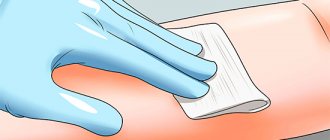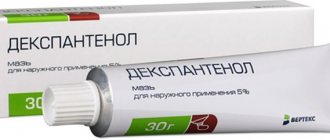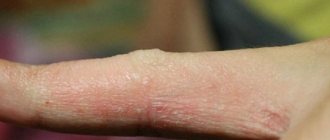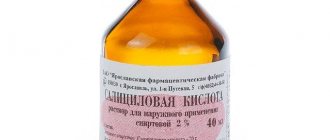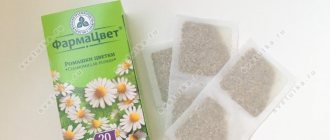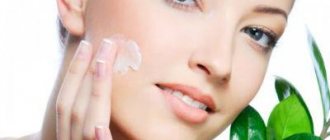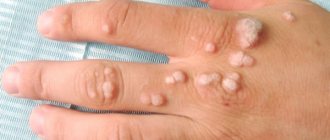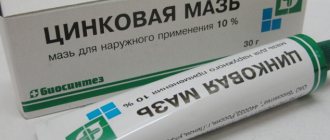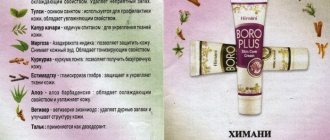Application rules for burns
Modern treatment of burn wounds involves the use of special dressings that disinfect, moisturize, and anesthetize the wound. Such dressings can have a different base: cotton fabric, plaster, hydroactive polymer and others. They may contain an antiseptic, analgesic, a regenerating drug or gel-forming substances that help maintain the required level of moisture in the damaged area.
All types of wound dressings have two sides. One of them is intended for contact with damaged skin and tissue, and therefore must be sterile. The other, the outer one, is devoid of a medicinal layer and serves for convenient fixation of the dressing material.
There is a certain algorithm that must be followed when using medicinal dressings:
- First, it is necessary to stop the action of the etiological or pathological factor. If there is clothing on the damaged surface, it is removed or cut, freeing the burned arm, leg, shoulder, lower leg, thigh from further exposure to boiling water, hot oil or chemicals. The stuck part of the fabric must not be torn off. It is cut off as much as possible with scissors, and the rest is left in the wound to avoid further injury.
- Now you need to cool the damaged area to relieve pain, relieve swelling and prevent further tissue damage. Such an event makes sense for the first half hour after an injury. To cool, place the affected part of the body under running cold water or immerse it for 20 minutes. The water temperature should not be lower than 15o C. At the same time, you can use a painkiller.
- The bandage is applied to the damaged area in such a way that the burn surface is completely covered, but does not extend beyond the wound more than 2 cm around the perimeter.
After the dressing has been cut out according to the area of the burn, the protective layer of the bandage is removed and applied to the body. For fixation, you can use a bandage or plaster.
If the burn is localized on the fingers, a bandage is applied to each finger separately, and then the hand and forearm are suspended on a piece of fabric.
A bandage is not applied to the face, and the wound is treated openly with a chlorhexidine solution and covered with ointment preparations.
Dressing of the burned area is carried out according to the instructions of the dressing used. As a rule, for burn wounds, the bandage must be replaced every 2-3 days. When providing first aid to a victim, it is not recommended to use anti-burn ointments, as they may affect the correct determination of the degree of injury.
We recommend reading:
- How to treat a wound after a burn
- What types of burns are there and which doctor treats them?
- Ointments for burns: effective ointments for treating skin
How to avoid complications and improve wound healing?
Another sterile hydrogel coating. There are several types:
- with miramistin (antiseptic and healing effect);
- with lidocaine (local anesthesia);
- with silver (prolonged antibacterial effect).
Attention! GelePran is suitable only for the treatment of dry wounds, without wound discharge.
The covering should be securely fixed with a plaster or bandage. The frequency of dressings depends on the condition of the burn.
Sold in packs of 2 pieces 5x7.5cm (about 360 rubles) and 5 pieces 7.5x10cm (about 900 rubles).
The main complication may be burn disease. It develops when more than 5–10% of the total skin area is affected. The complication arises due to a complex malfunction of organs and systems. We are talking about tachycardia, poor circulation, intoxication and other pathological conditions.
Another complication of burn injuries is sepsis. To avoid infection, you need to use only specialized plasters on burns and only as prescribed by a doctor when it comes to serious injuries. Regular treatment, monitoring the condition of the wound and the healing process is what is required during treatment to avoid complications.
Types of dressings
There are several types of dressings. Let's look at some of them with detailed descriptions.
| View | Characteristic |
| Aseptic | An aseptic dressing is used to provide emergency care for burns. The dressing material used is a sterile bandage, an ironed diaper or cotton cloth, and a clean bag. The material can be dry or moistened with an antiseptic (alcohol tincture of calendula or propolis, vodka, potassium permanganate solution). The main goal is to close the wound surface from infection before sending the victim to a medical facility. |
| Mazevaya | You can make it yourself or buy it ready-made at the pharmacy. To prepare it at home, the remedy is applied to gauze or a bandage, and then applied to the wound and secured. Most often, Levomekol and Panthenol are used for these purposes. Store-bought ointment dressings are a layer of medication on a mesh base with protection from external influences. The most famous and widespread is the Voskopran series of ointment dressings. Levomekol, Dioxidin, Methyluracil ointment, Povidone-iodine can be used as medicine. Branolind mesh ointment dressings with balsam tree extract have also proven themselves to be excellent. Peruvian balsam is an excellent antiseptic and wound healing remedy that has long been known. |
| Wet | Wet-dry dressings are intended for protection, pain relief and treatment of 2nd and 3rd degree burns. For wounds with a purulent inflammatory process, a base is applied with antiseptic solutions of furatsilin, boric acid or chlorhexidine. If there is a scab in a grade 3 wound, a wet-dry type of dressing with an antiseptic is also used to ensure a drying effect on the wound surface. Ready-made gel dressings for burns, Gelepran with miramistin and lidocaine, have moisturizing, antiseptic and analgesic properties. |
| Hydrogel | Hydrogel bandages for burns are a modern means for treating and protecting the wound surface. One of three forms of this dressing can be purchased at the pharmacy:
The advantage of such a remedy is pain relief, maintaining the required level of humidity in the wound, protection against infection, providing cooling and cleansing the burned area from necrosis products. Contraindication: this remedy should not be used on wounds with strong exudate. |
Silkoplast
Effective as first aid and for the treatment of second degree household burns.
- creates a cooling effect, thereby reducing pain;
- absorbs exudate from the wound;
- accelerates healing.
Before applying the patch, the wound and the skin around it should be cleaned. The edges of the patch should be well fixed, folds should not be allowed.
Price for 6 pieces is about 300 rubles. The package contains 3 pieces measuring 4.5 x 6.5 cm and 3 pieces measuring 6.8 x 4.3 cm.
Banolind dressings
Branolind burn dressing is a modern remedy for the treatment of burns and other wounds. It has a cotton mesh base. Branolind is an ointment dressing whose active ingredient is Peruvian balsam. Therapeutic impregnation has the following ingredients:
- Branolind ointment;
- glycerol;
- petrolatum;
- cetomacrogol;
- purified fat.
At the pharmacy you can purchase a package of Branolind with 10 or 30 pcs. mesh bandages. It is also possible to buy the mesh individually. This remedy has proven to be an excellent way to protect against infection, accelerate regeneration, and relieve inflammation. Branolind is widely used in surgery after skin grafting to accelerate cell growth and trouble-free tissue engraftment.
The advantage is that it is hypoallergenic. The wound-healing components of the ointment do not irritate even sensitive skin.
Based on consumer reviews, Branolind copes well with non-healing wounds of any nature. Pregnancy and lactation are not contraindications for use. It can also be used by children and adolescents.
Voskopran
For 2-3 degree burns, you can use a Voskopran bandage with Levomekol ointment or methyluracil 10%.
Do not use in case of individual intolerance, a history of adrenal insufficiency, as well as during pregnancy and breastfeeding.
- protects against mechanical influences, dirt, chemical irritation;
- prevents the development of secondary infection;
- prevents drying out and loss of bodily fluids;
- maintains the required temperature;
- accelerates the wound healing process.
In the absence of inflammatory foci, the bandage can be left until complete healing.
The price for 5 pieces measuring 5x7.5 cm is about 350 rubles. There are larger bandages (10x10 cm).
Branolind N with Peruvian balsam
Branolind N burn patch with Peruvian balsam has a wound healing and antiseptic effect.
- with individual intolerance;
- for the treatment of necrotic wounds.
Instructions for use:
- Open the package.
- Cut the headband to the desired size.
- Peel off a layer of paper from one side and apply it to the affected area of skin.
- Remove the paper from the other side of the bandage.
- Cover the bandage with a bandage or gauze and secure with a bandage.
- Change daily.
The patch is great for burns from boiling water.
Plaster Cosmos Hydro Active
Advantages of using the Cosmos burn patch:
- hypoallergenic and breathable;
- made of durable textile fabric with a two-layer pad;
- serves as an antiseptic;
- protects the wound from water and dirt;
- adsorbs discharge from the wound;
- helps reduce pain;
- forms a gel medium, thanks to which the wound heals faster and the pressure on it is softened;
- you can not change it for several days;
- does not stick to the wound and leaves no marks;
- does not irritate the skin.
Contraindications: individual intolerance.
- With clean hands, open the package.
- Remove the protective film and apply the patch to the damaged area of skin.
Price is about 180 rubles per package (3 pieces, size 45 mm x 65 mm).
Vitavallis
The dressing is suitable for the treatment of chemical and thermal burns of all stages (1-3). Contraindicated in case of individual intolerance.
- reduces pain;
- minimizes scar formation;
- accelerates healing;
- protects the wound from infection and cleans it;
- does not stick to the wound and is easily removed.
How to use burn plasters correctly
There are general recommendations for the use of plasters for burns:
- After receiving a burn, it is necessary to cool and rinse the wound - place the affected area under a stream of cold water.
- Next, the burn should be carefully treated with an antiseptic, such as hydrogen peroxide. Do not use iodine, brilliant green and other alcohol-based antiseptics.
- Dry the wound with a sterile, lint-free material (you can use a regular bandage folded in several layers).
- Remove the protective paper or film from the patch.
- Apply to the burn and secure tightly.
Folk remedies for the treatment of burns.
There are a large number of “folk” methods of treating burns. But do they all work and are they safe? Let's figure it out.
Incorrect: apply sour cream/butter to the freshly burned surface of the burn. This advice is completely wrong and harmful. The burned part of the body must be cooled as soon as possible. But sour cream, even from the refrigerator, is not suitable for this. It, like oil, will not contribute to cooling, but rather to overheating of the skin.
Incorrect: urinate on the burn surface, make compresses with urine. Urine contains ammonia, which has antiseptic properties. However, modern medicinal dressings and medical antiseptic solutions are much safer and more effective. Compresses on the burn surface can cause a serious inflammatory process. Correct: use special antiseptics in the treatment of burns. Dressings for burns must be sterile and breathable!
Incorrect: pierce or cut off burn blisters yourself. If there is a need for this, then such a procedure is carried out by a doctor, observing the rules of asepsis and antiseptics. Puncture of blisters on your own is fraught with infection and the development of complications. Correct: with an extensive burn of II-III degree, you must seek professional medical help.
Incorrect: wash the burn with hydrogen peroxide, lubricate it with iodine or brilliant green. Hydrogen peroxide, and especially alcohol solutions, should not come into contact with damaged skin surfaces. Otherwise, a thermal burn can be aggravated by a chemical burn. Correct: use alcohol-free antiseptics to treat burns.
Incorrect: apply a gauze pad or cotton compress to the burned surface. Fibers of cotton gauze and cotton wool, saturated with exudate, stick to the wound. This provokes re-injury with each dressing. Correct: use atraumatic therapeutic napkins based on silicone mesh, which does not stick to the wound and is easily removed.
Incorrect: apply sour cream/butter to the freshly burned surface of the burn. This advice is completely wrong and harmful. The burned part of the body must be cooled as soon as possible. But sour cream, even from the refrigerator, is not suitable for this. It, like oil, will not contribute to cooling, but rather to overheating of the skin.
Incorrect: urinate on the burn surface, make compresses with urine. Urine contains ammonia, which has antiseptic properties. However, modern medicinal dressings and medical antiseptic solutions are much safer and more effective. Compresses on the burn surface can cause a serious inflammatory process. Correct: use special antiseptics in the treatment of burns. Dressings for burns must be sterile and breathable!
Incorrect: pierce or cut off burn blisters yourself. If there is a need for this, then such a procedure is carried out by a doctor, observing the rules of asepsis and antiseptics. Puncture of blisters on your own is fraught with infection and the development of complications. Correct: with an extensive burn of II-III degree, you must seek professional medical help.
Incorrect: wash the burn with hydrogen peroxide, lubricate it with iodine or brilliant green. Hydrogen peroxide, and especially alcohol solutions, should not come into contact with damaged skin surfaces. Otherwise, a thermal burn can be aggravated by a chemical burn. Correct: use alcohol-free antiseptics to treat burns.
Incorrect: apply a gauze pad or cotton compress to the burned surface. Fibers of cotton gauze and cotton wool, saturated with exudate, stick to the wound. This provokes re-injury with each dressing change. That's right: use atraumatic therapeutic wipes based on silicone mesh, which does not stick to the wound and is easily removed.
source
All iLive content is reviewed by medical experts to ensure it is as accurate and factual as possible.
We have strict sourcing guidelines and only link to reputable sites, academic research institutions and, where possible, proven medical studies. Please note that the numbers in parentheses ([1], [2], etc.) are clickable links to such studies.
If you believe that any of our content is inaccurate, out of date, or otherwise questionable, please select it and press Ctrl Enter.
Bandages are used to treat burn injuries of varying severity and location. Let's consider their types, rules and methods of application, medicinal properties.
Damage to the skin and mucous membranes by chemicals, high or low temperatures, radiation energy or electricity is a burn. The specificity of this type of injury depends on the properties of the agent that caused it and the individual characteristics of the patient’s body (type of skin structure, age, volume of damage). Main types of burns:
- Thermal - occur due to contact with boiling water, hot air or steam, or hot objects. The depth of damage depends on the duration of the agent's action.
- Electrical – most often occur when working with electrical equipment or due to a lightning strike. Skin injuries are accompanied by disorders of the cardiovascular and respiratory systems. Even a small wound causes headaches, dizziness, and loss of consciousness. The last stages provoke respiratory arrest and clinical death.
- Radiation – damage caused by ultraviolet radiation. They occur due to prolonged exposure to the sun.
- Chemical - develops upon contact with chemically aggressive substances. The severity and depth of injury depend on the concentration and time of exposure of the reagent to living tissue.
Bandages are applied for all types of burns. For them, special medicinal ointments, antiseptics, disinfecting solutions and other drugs are used that accelerate the healing process.
A burn is an injury from which no one is immune. The effectiveness of recovery depends on correct and timely treatment. In order to help the victim, you need to know the algorithm for applying bandages. For burns and frostbite, it is worth considering the location and extent of the lesion.
- First of all, it is necessary to ensure sterility. If there is no bandage at hand and a piece of fabric is used, it must be clean, as there is a risk of infection. You can apply a bandage yourself for 1-2 degree burns, that is, for redness and blisters on the skin.
- For more serious injuries, grade 3-4, when muscle tissue is visible, bandages are not recommended and emergency medical care is needed. Since the bandage can stick to the tissue, and changing it will cause severe pain and increase the risk of infection.
- The bandage is applied after the frostbitten or burned area is cleared of contamination and treated with a special antibacterial or antiseptic ointment. Treatment of the wound promotes normal tissue repair and reduces pain.
Before applying a bandage to the wound area, normal blood circulation must be restored. In case of frostbite, it is recommended to rub and warm the skin, and in case of a burn, stop exposure to temperature and cool the site of injury. After this, relieve pain and prevent infection.
Let's consider the basic rules for applying a bandage:
- Wash your hands thoroughly and prepare sterile materials (bandage, piece of cloth, gauze) for dressing. The use of dirty dressings is dangerous, as it can cause infection of the wound.
- Carefully inspect the burned area to determine the extent of the burn. Only after this can you decide whether to provide first aid yourself or go to the hospital. Do not forget that a burn wound, regardless of its size and location, is very serious, and without proper treatment can lead to serious complications.
- If there is any anti-burn, antiseptic or analgesic ointment, it must be applied to the skin before applying the bandage. This will reduce pain and help you recover faster from injury by providing protection from germs.
- Gently bandage the injured area, being careful not to cause pain to the victim.
The main difficulty encountered when applying bandages is determining the extent of the burn. If the epidermis is red and there are blisters on it, then this indicates grade 1-2. More serious wounds require medical attention. If the injury is serious and the skin has turned black, then amputation of the damaged limbs is possible without emergency hospitalization.
[1], [2], [3], [4]
The effectiveness of burn treatment depends not only on timely medical care, but also on the drugs used. Antiseptic dressings for burns are necessary to prevent infection and destroy putrefactive bacteria. The drug has a disinfectant, bacteriostatic, bactericidal and antiputrefactive effect.
Today, the pharmaceutical market offers many antiseptics in different release forms that can be used for dressings and wound treatment. Their use is explained by the fact that even under conditions of complete sterility, a small amount of bacteria enters the wound. For periodic treatment of small burns, preparations based on iodine or silver, but without alcohol, are best suited.
Let's look at the most effective antiseptics for treating burns of varying severity:
- Argacol is a hydrogel with active ingredients: poviargol, catapol, dioxidin. Has an antimicrobial effect. Used to treat burns, cuts, abrasions and other skin injuries. After application to the skin, it forms an elastic, air-permeable and water-permeable film.
- Amprovisol is a combination product with anesthesin, vitamin D, menthol and propolis. It has anti-burn, antiseptic, anti-inflammatory, cooling and analgesic properties. Effective in the treatment of thermal and sunburns of the 1st degree.
- Acerbine is an antiseptic for external use. Available in spray form, making it easier to apply to wounds. Active ingredients: benzoic, malic and salicylic acid, propylene glycol. The spray is used to treat burns, ulcers and open wounds on the skin. Accelerates regeneration, reduces the formation of exudate, promotes crust formation.
- Betadine is a drug with a wide range of uses. It has several forms of release: ointment, solution, suppositories. The active ingredient is iodine. It has bactericidal properties, and its mechanism of action is based on the destruction of proteins and enzymes of harmful microorganisms. Used for antiseptic treatment of burn surfaces and wounds, disinfection. Can be used as a means for primary treatment of skin and mucous membranes from infected materials.
- Miramistin is a medicine with a hydrophobic effect on harmful microorganisms. Active against gram-positive and gram-negative microorganisms, has an antifungal effect. It is used to treat burns, wounds, trophic ulcers, suppuration, frostbite and other infected lesions. Miramistin is used in dermatology, gynecology, venereology, and dentistry.
- Cigerol is an antiseptic solution with disinfecting and wound-healing properties. Used to treat burns, necrotic and granulating wounds, trophic ulcers.
- Chlorhexidine is a local antiseptic solution with bactericidal properties. Its mechanism of action is based on changing the cell membranes of harmful microorganisms. It is used to treat skin for burns, deep wounds, abrasions, and also during surgery.
